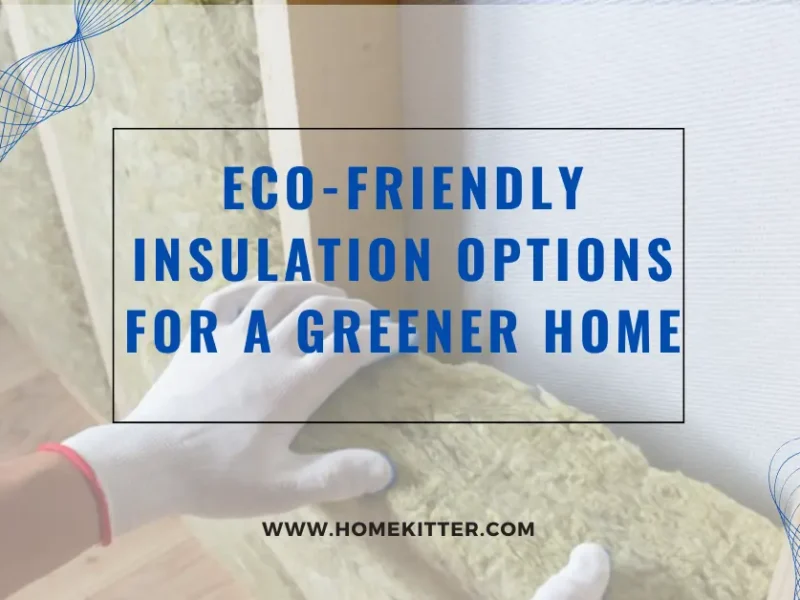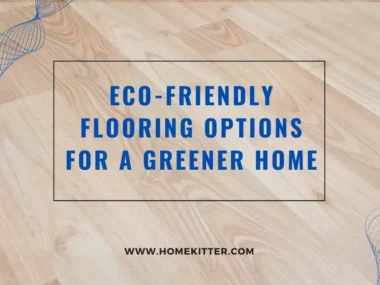Table of Contents
Your home is a sanctuary where you spend a large portion of your time, which is why it must remain comfortable always.
Naturally, your home is warm during the summer, and cold during the winter. You will therefore need to work on keeping the temperature in your home at a level that you want, which is where home insulation comes in.
Rather than spending tons of money on energy so you can keep your home warm or cool, try insulating it.
There are numerous insulation options out there but our recommendation if you would go for any of them is that you pick the eco-friendly, as they are not just good for the environment, many of them are also cheap and easy to use.
These insulation materials are made of recycled materials, their production process is simple, and they don’t contain harmful substances that can harm the environment.
Cellulose, cotton denim, sheep’s wool, cork, polystyrene, and so on, are the different Eco-Friendly Insulation Options for a Greener Home that you should consider when contemplating which option to use for your home.
What is Insulation in a home?
This has to do with creating a barrier between the inside of your home and the outer surroundings to prevent heat loss or heat gain. To retain the level of temperature that you want in your home, it is important that you use one of the many insulation options that exist.
The point of insulation is to keep your home warm during cold weather and cool during warm one, without spending a lot of money on energy.
To be efficient, it is important that you insulate certain parts of the home such as the roof, walls, windows, doors, and floors. Although you can’t prevent heat loss, you can use insulation to reduce it significantly.
Additionally, while trying to keep the desired energy level in your home, ensure to are environmentally conscious. Make use of eco-friendly insulation options that won’t end up harming the environment in any way whatsoever. Many of these options are recyclable, biodegradable, and renewable.
Eco-Friendly Insulation Options for a Greener Home
As it has been established when choosing an insulation option to help regulate the temperature in your home, consider eco-friendly options, as they help to reduce waste and protect the environment.
There are numerous environmentally friendly insulation options out there, but let’s just discuss a handful of them.
Sheep’s Wool
Commonly used to make cozy sweaters and blankets, this fire-resistant material can be used to insulate the house and get heat loss protection the same way we do when we use them for clothing.
Its inner layers continue to absorb moisture while retaining its dry nature. Sheep’s wool is considered a renewable material because of how quickly sheep can regrow them. When wool fibers are compressed, millions of air pockets are formed, which then hold air, keeping the home warm in the winter and cool in the summer.
Cotton
The cotton denim used to make blue jeans is another eco-friendly insulation option. Instead of dumping a ton of it on a landfill somewhere, this material is folded into batts like fiberglass and used to insulate the home.
Furthermore, cotton denim is a safe insulation option as it doesn’t contain the hazardous gas formaldehyde, which could pose a serious threat to the dwellers of the home. It also repels insects and can be treated with boric acid to make it less flammable.
Cellulose
As an inexpensive and environmentally friendly insulation option, cellulose is mostly used to insulate walls, floors, and roofs. It is biodegradable and completely breathable. It is made from recycled newsprint and denim, thereby reducing the quantity of waste taken to landfills. It can be treated with boric acid to make it resistant to fire and insects.
Icynene
Made from castor oil, is a spray foam insulation that is great at sealing leaks and drafts, and blocking out noise. When sprayed on a surface, Icynene increases almost 100 times its natural volume.
This allows it to trap very small air bubbles throughout it, which acts as the primary resisters to heat loss. Icynene is an environmentally friendly insulation that doesn’t contain any hazardous chemicals.
Cork
Made from the outer bark of oak trees, cork is a natural, environmentally-friendly insulation material that can absorb superfluous carbon dioxide from their environment. It is immune to mold and moisture penetration and can be used to insulate roofs, floors, and walls. It also has great thermal and damp-proof features and can last for quite a long time.
Polystyrene
This is a plastic material that possesses low thermal conductivity when expanded, which makes it a great insulation option. It does not produce any smell, and can be easily handled.
Benefits of Eco-Friendly Insulation Options
1. Most eco-friendly insulation options can be recycled, which is a great advantage for the environment.
2. Many of them are renewable materials that can’t finish.
3. They are completely breathable.
4. The production process of most of them is not stressful.
5. Most of these options can be easily recycled after they have been used for insulation.
6. Many of them possess a great heat storage ability.
7. They don’t contain harmful chemicals.
8. They help to prevent waste of resources.
The Point is:
We all have to play our respective part in keeping the environment safe and reducing the waste of resources. Therefore, as you consider insulation options to help keep your home and family warm during the winter and cool during the summer, be sure to pick an Eco-Friendly Insulation Option for a Greener Home.






